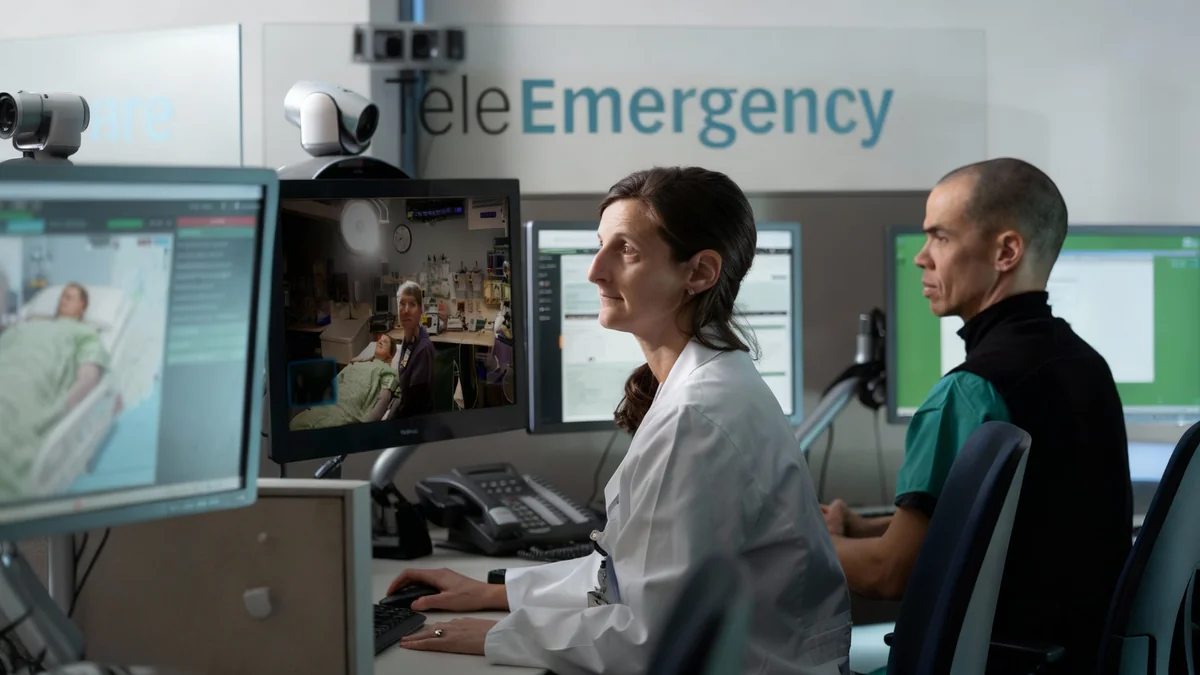Thousands of Medicare patients in Vermont face uncertainty after federal pandemic-era rules allowing broad telehealth coverage expired on October 1. Major healthcare providers are now navigating a complex and financially risky landscape, hoping for retroactive legislative action from a stalled Congress.
The policy shift has left both small clinics and large hospital networks in a state of limbo, forcing them to either stop billing for many virtual services or provide them at financial risk. The change primarily affects appointments from home, a service that became a critical lifeline for rural and vulnerable populations during the public health emergency.
Key Takeaways
- Pandemic-era telehealth flexibilities for Medicare expired on October 1, reverting to more restrictive pre-2020 rules.
- The change impacts an estimated 500 telehealth visits per week at Dartmouth Health alone, with nearly 200 of those patients residing in Vermont.
- Large providers like Dartmouth Health and UVM Health Network are continuing services and holding bills, betting on future retroactive approval from Congress.
- The new rules also affect eligibility for home health and hospice care, as telehealth appointments no longer count as the required face-to-face encounter.
A Lifeline for Vulnerable Patients
For many patients, especially those with chronic conditions, neurodevelopmental differences, or mobility challenges, telehealth is more than a convenience—it's a gateway to consistent medical care. Dr. Mel Houser, the founding physician of All Brains Belong, a community clinic in Montpelier, described the expansion of virtual care as a “game changer.”
“Many patients were able to access health care that worked for them for the first time,” Houser explained, noting the benefits for individuals with long Covid and other complex conditions. Virtual appointments eliminate significant barriers, such as the risk of infection in a clinical setting, the sensory overload of an office visit, and the logistical and financial burden of transportation.
At All Brains Belong, nearly half of its 350 patients are covered by Medicare or Medicaid. While Vermont Medicaid and private insurers continue to cover telehealth, the clinic can no longer bill Medicare for many of these services. This creates a substantial cash flow problem for a small practice and forces patients to consider self-pay options, even with sliding scale fees available.
Understanding the Rule Change
Before the pandemic, Medicare coverage for telehealth was highly restricted, generally limited to patients in rural areas who traveled to a designated local clinic (an "originating site") to connect with a specialist remotely. Pandemic waivers allowed patients to receive care from their own homes. With the expiration, Medicare now only covers telehealth from home for mental health, substance use disorders, acute stroke treatment, and end-stage renal disease dialysis. For all other conditions, the old, more restrictive rules apply.
Major Health Networks Take a Gamble
The state's largest healthcare providers are facing the disruption on a massive scale. The University of Vermont (UVM) Health Network handles nearly 40,000 Medicare-related telehealth visits annually. Dartmouth Health, another major regional provider, estimates it sees about 500 telehealth visits from Medicare beneficiaries each week.
Rather than turning patients away or demanding upfront payment, both networks have chosen to continue providing care and are holding the bills. They are banking on the hope that Congress will pass legislation to extend the telehealth flexibilities and make the approval retroactive. It's a significant financial risk, but one they feel is necessary to ensure continuity of care.
“You can’t just say ‘alright, let’s bring 40 patients back in a day.’ There’s no place for them,” said Dr. Kevin Curtis, the medical director of Dartmouth Health’s Connected Care program. He explained that their facilities and workflows have been redesigned around a hybrid model that relies heavily on virtual appointments.
Dr. Curtis emphasized that this is fundamentally an issue of access and equity. Many patients benefiting from at-home telehealth face physical mobility challenges or lack reliable transportation. For some living in remote parts of New England, a specialist could be a two-hour drive away. The change disproportionately affects those who are already struggling to access the healthcare system.
Telehealth by the Numbers
- 158,360: The approximate number of Medicare beneficiaries in Vermont.
- 6.7 million: The number of Medicare recipients nationwide who used telehealth in 2024, representing nearly 25% of the eligible population.
- 40,000: Approximate number of Medicare-related telehealth visits per year at UVM Health Network.
- 500: Estimated number of weekly telehealth visits by Medicare patients at Dartmouth Health.
A New Barrier to Home and Hospice Care
The impact of the policy change extends beyond routine appointments. It has also created a significant hurdle for some of the state's most vulnerable residents seeking home health and hospice services. Medicare requires a face-to-face encounter with a provider to certify eligibility for these services. During the pandemic, this encounter could happen via telehealth.
That flexibility is now gone. According to Eric Covey, interim executive director of the VNAs of Vermont, this forces homebound individuals, who may lack transportation, to either delay necessary care or forgo it entirely. This delay can have serious consequences.
“A chronic condition could worsen, and ultimately, they could end up in a situation where their condition worsens to a point that they need to be hospitalized,” Covey explained. This outcome is not only detrimental to the patient but also more costly and taxing on the broader healthcare system, which is already under strain.
While many referrals for home health occur during hospital discharge, the rule change critically affects those who need certification from their community provider. “The issue isn’t the volume. It’s the kind of severity and importance of the need that is about access to care for Vermonters,” Covey said.
The Faces Behind the Statistics
Healthcare providers stress that behind the large numbers are individuals with urgent needs. The lapse in telehealth coverage is not an abstract policy debate; it has real-world consequences for people managing serious health conditions in rural settings.
Dr. Curtis of Dartmouth Health pointed out the human element that can get lost in policy discussions. “We talked about a lot of this in numbers and impact and 500 (visits) a week, but each one of these is a Medicare beneficiary,” he said. “Each of these (statistics) is one person who is a Medicare beneficiary, who needs care in their rural setting.”
For now, patients and providers in Vermont and across the country are watching Washington, hoping for a legislative solution that will restore a mode of care that has proven essential for millions. As Dr. Curtis stated, “There are still 500 people every week who we just need to get the care to, whatever it takes.”





